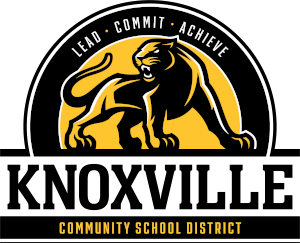To implement the Wellness Policy, the following district specific goals have been established:
Goal 1 – Nutrition Education and Promotion: Schools will provide nutrition education and engage in nutrition promotion that help students develop lifelong healthy eating behaviors. The goals for addressing nutrition education and nutrition promotion include the following:
-
Provide students with the knowledge and skills necessary to promote and protect their health;
-
Ensure nutrition education and promotion are not only part of health education classes, but also integrated into other classroom instruction.
-
Promote fruits, vegetables, whole-grain products, low-fat and fat-free dairy products, and healthy foods;
-
Implement evidence-based healthy food promotion techniques through the school meal programs using Smarter Lunchroom techniques.
Goal 2 – Physical Activity: Schools will provide students and staff with age and grade appropriate opportunities to engage in physical activity that meet federal and state guidelines, including the Iowa Healthy Kids Act. The goals for addressing physical activity include the following:
-
Promote the benefits of a physically active lifestyle and help students develop skills to engage in lifelong healthy habits;
-
Physical activity shall not be used for or withheld as a punishment;
-
All physically able students in grades six through twelve shall be required to engage in physical activity for a minimum of one hundred twenty minutes per week. This may include Physical Education and recess.
-
All elementary students shall have recess according to the following:
-
At least 20 minutes a day;
-
Outdoors as weather and time permits;
-
Encourages moderate to vigorous physical activity; and
-
-
Scheduled to avoid extended periods of inactivity (i.e., periods of two or more hours).
Goal 3 – Other School-Based Activities that Promote Student Wellness: Schools will support student, staff, and parents’ efforts to maintain a healthy lifestyle, as appropriate. The goals for addressing other school-based activities that promote student wellness include the following:
-
Foods and beverages will not be used as a reward and foods/beverages will not be withheld as punishment;
-
Permit students to bring and carry water bottles filled with water throughout the day;
-
Make drinking water available where school meals are served during meal times;
Public Involvement: There is a process for permitting parents, students, representatives of the school food authority, teachers of physical education, school health professionals, the school board, administrators and the public to participate in the development, implementation, and periodic review and update of the policy.
- The Child Nutrition Director invites suggestions or comments concerning the development, implementation, and improvement of the school wellness policy. As such, interested persons are encouraged to contact the Child Nutrition Director.
Approved: 7/15/2019 Reviewed: Revised: 7/29/2024

